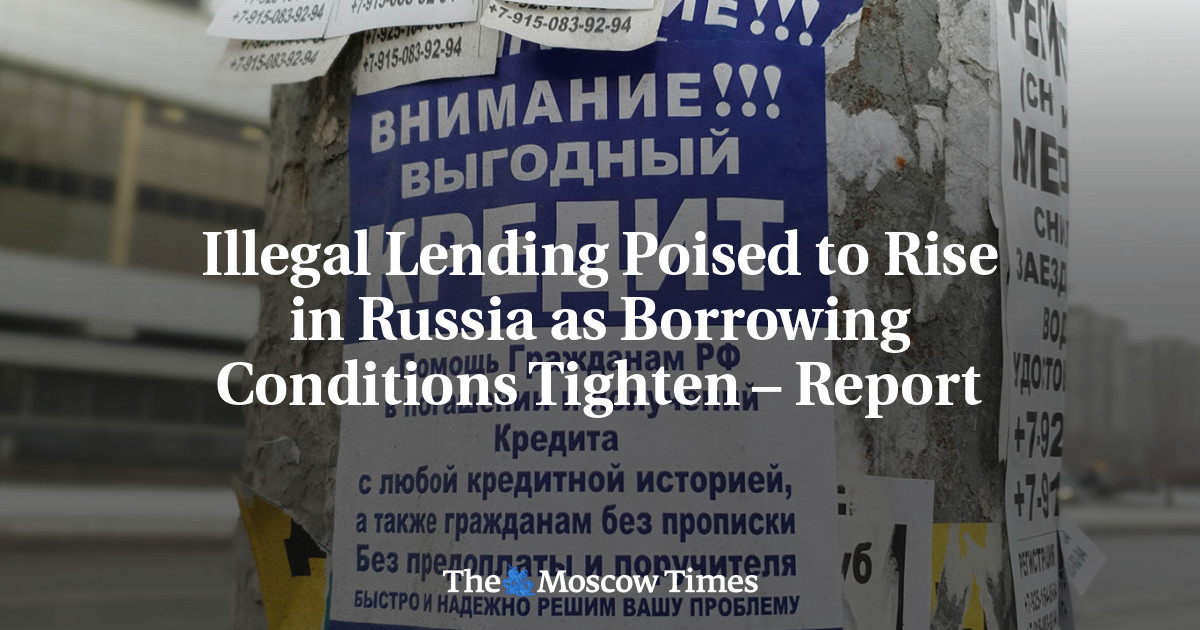
Illegal Lending Poised to Rise in Russia as Borrowing Conditions Tighten
How did your country report this? Share your view in the comments.
Diverging Reports Breakdown
Illegal Lending Poised to Rise in Russia as Borrowing Conditions Tighten – Report
Russians currently owe more than 37 trillion rubles ($462 billion) to banks and microfinance organizations. Delinquent debt has exceeded 1.5 trillion ruble ($18.7 billion) requests for credit restructuring now top 500,000 per month. Many borrowers admitted to taking on new debt to pay off older loans as regulators impose new limits. Experts warn that a shrinking legal market may inadvertently boost the appeal of underground lenders. The Central Bank has imposed sweeping restrictions on consumer lending, including caps on interest overpayments and new rules limiting borrowers to one payday loan at a time. In 2024, 32% of MFO clients said they were drawn by the ease of obtaining a loan, up from 20% in 2023, according to a report by the state pollster VtSIOM. The share of borrowers who approached MFOs after being rejected by banks rose from 22% to 30%.
Russians currently owe more than 37 trillion rubles ($462 billion) to banks and microfinance organizations, the report says. Delinquent debt has exceeded 1.5 trillion rubles ($18.7 billion), while requests for credit restructuring now top 500,000 per month. Troubled loans made up 5.7% of retail loan portfolios by the end of May, up from previous months.
VTsIOM’s March survey found that more than a quarter of respondents, 27%, held three or more active loans. While 30% of borrowers reported no difficulty repaying their debts, 43% said it required some effort, and 22% described it as a serious challenge. Many borrowers admitted to taking on new debt to pay off older loans—an increasingly unviable strategy as regulators impose new limits.
As access to bank credit shrinks, more consumers are turning to microfinance organizations (MFOs), which typically serve lower-income groups. In 2024, 32% of MFO clients said they were drawn by the ease of obtaining a loan, up from 20% in 2023.
Meanwhile, the share of borrowers who approached MFOs after being rejected by banks rose from 22% to 30%. The demographic profile of MFO clients is also shifting, with more borrowers holding higher education degrees and reporting mid-range incomes.
Among MFO borrowers, 40% took loans to cover existing debt, second only to everyday expenses such as groceries and household goods (42%) and ahead of appliance purchases (32%).
More than one in five respondents said they were likely to need emergency funds in the next year but would be unable to access legal credit.
Of this group, 8% said the scenario was “highly likely,” while 13% described it as “somewhat likely.” Seventeen percent said they would use the borrowed funds to repay other loans.
The Central Bank has imposed sweeping restrictions on consumer lending, including caps on interest overpayments and new rules limiting borrowers to one payday loan at a time. Though similar reforms are being extended to MFOs, experts warn that a shrinking legal market may inadvertently boost the appeal of underground lenders.
“Restrictions on legal market participants have the opposite effect: illegal lending increases,” said Yevgeny Masharov of the Public Chamber’s legislative review commission. “You don’t have to go far. Drive 100 kilometers from Moscow and you’ll see every bus stop plastered with loan ads.”
Other factors are compounding the risk. A growing number of personal bankruptcies, for example, is pushing financially strained individuals into legal limbo.
“A person who has gone bankrupt is deprived of their rights. They cannot take out loans from official sources. And if they are used to doing so, I don’t believe they will give up this vicious practice,” said Yekaterina Golub, executive director of the analytical center Forum.
Masharov also warned that demobilized soldiers returning from Ukraine could become a high-risk group. Many earned monthly salaries of 200,000 rubles ($2,500) during deployment, he said, but will face a harsh reality upon return, with average regional wages around 30,000 rubles ($375).
“They’re used to one lifestyle, but it’s no longer sustainable,” he said. “They’ll borrow while they can, and when legal lenders shut them out, they’ll go underground.”
While illegal lending carries a theoretical penalty of up to three years in prison, most offenders face minor fines.
Alla Khrapunova, deputy director of the For Borrowers’ Rights Foundation, said the punishments for illegal lending are relatively lenient and questioned the likelihood of consistent enforcement.
She noted that the Central Bank, rather than law enforcement, has taken the lead in identifying unlicensed lenders, uncovering over 1,500 such operations last year alone.
